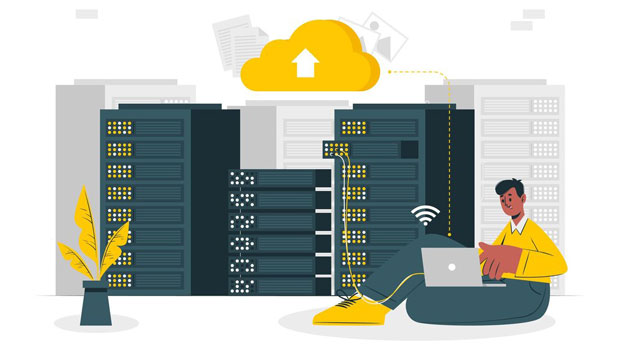In the rapidly evolving world of internet privacy and security, proxies play a crucial role in providing anonymity and bypassing geo-restrictions. Among various types of proxies, data center proxies are commonly used for these purposes. However, there is a new trend in the market with the emergence of rotating data center proxies like PYPROXY, offering significant advantages over traditional static data center proxies. This article will compare PyProxy rotating data center proxies with traditional data center proxies, analyzing the unique benefits of each and offering insights into their suitability for different use cases. What are Traditional Data Center Proxies?Traditional data center proxies are static proxies that come from a data center, where multiple users share IP addresses. These proxies are typically inexpensive and provide fast internet connections. They are widely used in various scenarios, including web scraping, social media management, and accessing geo-blocked content.However, one significant drawback of traditional data center proxies is that they are easily detectable and can be blocked or blacklisted by websites, especially those that are sensitive to malicious activities. Websites can identify traffic coming from data centers due to the large volume of requests coming from a limited set of IP addresses. This limitation often makes traditional proxies less reliable for long-term use, as IP addresses may get banned or flagged, reducing anonymity.What is PyProxy Rotating Data Center Proxy?PyProxy rotating data center proxies, on the other hand, offer dynamic and automatic IP address rotation. Instead of relying on a fixed set of IPs, PyProxy continuously changes its IPs at regular intervals, ensuring that each request made to the server comes from a different IP address. This rotation significantly improves anonymity and bypasses the restrictions that static data center proxies face.With PyProxy, users can configure the frequency of IP changes, whether it’s per request, per session, or at specific time intervals. This added flexibility allows businesses and individuals to scale their proxy usage without the risk of detection, making PyProxy an ideal choice for high-volume, long-term web scraping, ad verification, or even accessing restricted content without getting blocked.Key Differences Between PyProxy and Traditional Data Center Proxies1. IP RotationThe most significant difference between PyProxy rotating proxies and traditional data center proxies is IP rotation. Traditional proxies typically use a single static IP for all requests, making them easy to identify and block. In contrast, PyProxy constantly rotates through a pool of IP addresses, reducing the likelihood of detection and making it more difficult for websites to block traffic.2. Anonymity and SecurityWith traditional data center proxies, users face higher risks of being detected due to the predictability of IP address traffic. Websites can easily flag multiple requests coming from the same data center, especially if they come from a high-volume source. On the other hand, PyProxy’s rotating proxies help enhance user anonymity. Since IPs are constantly changing, websites cannot trace requests to a single source, offering a higher level of security and privacy for users.3. Bypassing Geo-restrictions and IP BansTraditional proxies can be vulnerable to geo-restriction bypassing due to their predictable nature. Once websites or services detect and block a proxy’s IP, users are unable to access the content they were attempting to view. PyProxy’s rotating proxies, however, provide a continuous stream of new IPs that are not as easily blocked. This makes it more reliable for users who need to circumvent geo-restrictions on a regular basis, such as accessing region-specific content or services.4. Speed and ReliabilityIn terms of speed, traditional data center proxies typically offer fast internet connections since they are hosted in optimized data centers. However, with the risk of detection and banning, this speed may diminish over time as IP addresses get blocked. PyProxy’s rotating proxies mitigate this issue by avoiding IP bans, ensuring consistent speeds and reliability over longer periods. The dynamic nature of the rotating IP addresses also means that traffic can be distributed more evenly, avoiding congestion or bottlenecks that could occur with static proxies.5. ScalabilityScalability is a critical factor when choosing between traditional and rotating proxies. As businesses grow or increase their usage of proxies for web scraping, ad verification, or social media management, traditional proxies may struggle to keep up. With PyProxy rotating proxies, businesses can easily scale their usage without worrying about hitting limits or being blocked. The flexibility to rotate IPs allows companies to handle higher volumes of requests while maintaining anonymity and avoiding detection.6. CostTraditional data center proxies are generally more affordable compared to rotating proxies. However, when considering the cost over the long term, PyProxy’s rotating proxies can provide better value due to their superior reliability and lower chances of getting blocked or banned. For businesses and users who rely heavily on proxy usage, investing in PyProxy may be more cost-effective in the long run as it reduces the need for constant IP replacements or the risk of account bans.Use Cases and Applications1. Web ScrapingFor web scraping, where large volumes of data are extracted from websites, rotating proxies like PyProxy are ideal. They allow users to scrape websites without risking IP bans, ensuring uninterrupted access to the data. Traditional data center proxies may work for smaller-scale scraping tasks but will face significant challenges when handling high-volume or long-term scraping projects.2. Social Media ManagementManaging multiple social media accounts often requires rotating IPs to avoid getting flagged by platforms like Facebook, Instagram, or Twitter. PyProxy’s rotating proxies provide an excellent solution for social media managers who need to automate posts or interactions across several accounts without triggering security measures.3. Ad VerificationIn the world of ad verification, ensuring that ads appear correctly across various regions and platforms is essential. PyProxy’s rotating data center proxies provide the flexibility needed to check the visibility of ads across different locations without getting blocked. Traditional proxies may face limitations when accessing ad platforms for verification purposes, especially when used on a large scale.4. Market ResearchMarket research often requires accessing competitor websites, analyzing pricing models, and tracking market trends. Using rotating proxies helps businesses gather data from a variety of sources without being detected or blocked. This is crucial for gathering competitive intelligence without alerting competitors to your actions.Conclusion: Which Proxy Should You Choose?The choice between PyProxy rotating data center proxies and traditional data center proxies largely depends on your specific needs. If you are looking for high anonymity, scalability, and long-term reliability, PyProxy’s rotating proxies are an excellent choice. They offer superior performance when handling large volumes of requests and can avoid many of the pitfalls associated with traditional data center proxies, such as IP bans and geo-restrictions.For small-scale operations or one-time tasks, traditional data center proxies may still be sufficient, as they are typically less expensive. However, for businesses or individuals who require continuous, high-volume proxy usage, investing in rotating proxies like PyProxy can provide significant benefits in the form of greater anonymity, security, and scalability.In summary, while both proxy types have their advantages, PyProxy rotating data center proxies offer a more robust solution for users who prioritize privacy, security, and scalability in their proxy use.
Nov 14, 2025



































































